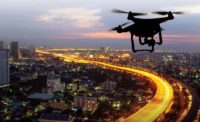Think back to 2009 and the phone you owned. While the phone you carry today might not look that different, a smartphone or its equivalent is far more powerful than it was just 10 years ago. While it is relatively easy for businesses to track the evolution of phone technology, have they similarly considered how their own corporate security departments have changed during the same period?
Cast your mind back 10 years or so: This was during the global economic crisis and before the Arab Spring—and during a wave of enthusiastic, global consumer adoption of social media platforms such as Facebook, but before most businesses had established Twitter accounts, let alone a comprehensive social media strategy across multiple platforms. During this time, businesses were just beginning to explore new use cases for sensors embedded in everyday objects, while grappling with the explosion of public data from disparate sources and an overall increase in the world's interdependencies and interconnectedness.
Ten years ago, most corporate security departments relied on traditional news sources, supplemented by formal and informal networks of specialist security advisors. Gathering information via such channels took time, and the response often lagged events on the ground by hours, usually days. There was no guarantee of accuracy either.
Social Media Becomes a Tool for Social Change
While the use of traditional news sources and networks of security professionals could suffice in slow-moving events, the coming of the Arab Spring was a key tipping point in exposing inherent weaknesses in this approach.
In fact, the Arab Spring caught many experts off guard. It also caught international companies and governments by surprise. As events progressed, it quickly became apparent that demonstrators participating in the popular uprising used social media to plan and communicate. In short, if those involved in the Arab Spring discussed their plans on social media, corporate security teams needed to listen.
Consequently, many experts view the Arab Spring as the point when security departments started to realize the value in tapping into open source information as a means of tracking a fast-moving, high-impact event.
Making Sense of Chaos
Nonetheless, the adoption of alternative sources of data didn't happen overnight. While it remains the case today, many of the corporate security managers and directors 10 years ago were in their 40s, 50s, and 60s and not necessarily early adopters. There was also a problem created by the sheer volume of social media data and the shortage of tools to make digesting that information more manageable.
While it seemed like a good idea to monitor publicly available data during times of crisis, manually sifting through vast amounts of data to find relevant information proved hit or miss. It was unrealistic then, as it still is today, to expect an analyst to monitor social media without limiting the number of accounts they could track—by topic, geography, or other parameters important to their organizations.
This approach also required the analyst to guess which accounts might provide the greatest insight. The analyst then had to manually scan for keywords or phrases of interest, while remaining blind to other social media users with a better vantage point and more timely information.
What Was Missing
Given the limits of an analyst's manual review coupled with the exponential growth of publicly available data, artificial intelligence (AI) and machine learning (ML) started to become critical components of the corporate security department's toolbox.
Ten years on, today's technology provides corporate security professionals with unprecedented insight and understanding around threats to their personnel, facilities, operations and interests around the world. Automating the data listening and gathering phase considerably lessens the burden of today's analysts. In turn, the enhanced information AI generates, with previously unimaginable speed and scale, allows companies to develop proactive responses to emerging threats.
Just as importantly, unlike legacy social media aggregation tools, AI enables corporate security teams to use a broader lens to capture more information, of different types, including text, video and government sensors from countless vantage points. The technology then allows corporate security teams to augment and sometimes replace information provided via conventional channels such as informal or formal security networks and traditional news media.
Not Just Older with Age
Whatever the nature of a crisis—a mass shooting, a bridge collapse or a natural disaster—once integrated into the corporate security toolkit, AI-driven technologies can provide critical, real-time information that enables businesses to better protect their people and assets while responding with enhanced speed, confidence and agility.
While our phones may have morphed from bricks to candy bars, the computing power they pack far exceeds the phones from 10 years ago. Similarly, while the basic mission of corporate security teams across industries and borders remains clear, much has changed in their worlds as well. Thanks to AI and ML, and the use of alternative data sources, teams are able to monitor and process infinitely more datasets than they could a decade ago—and on that basis, today's corporate security departments are much wiser and faster with age.




